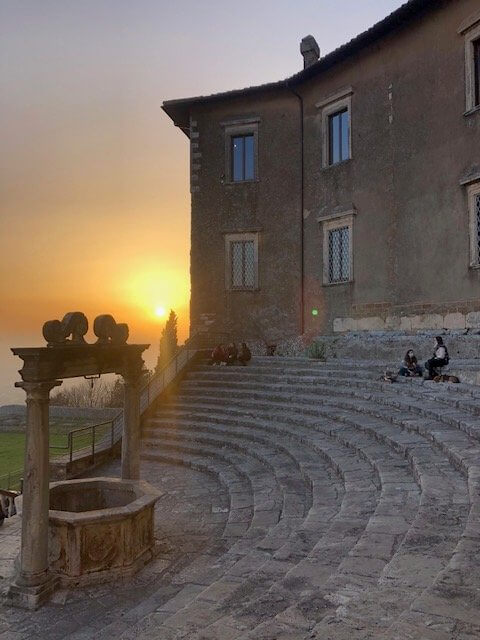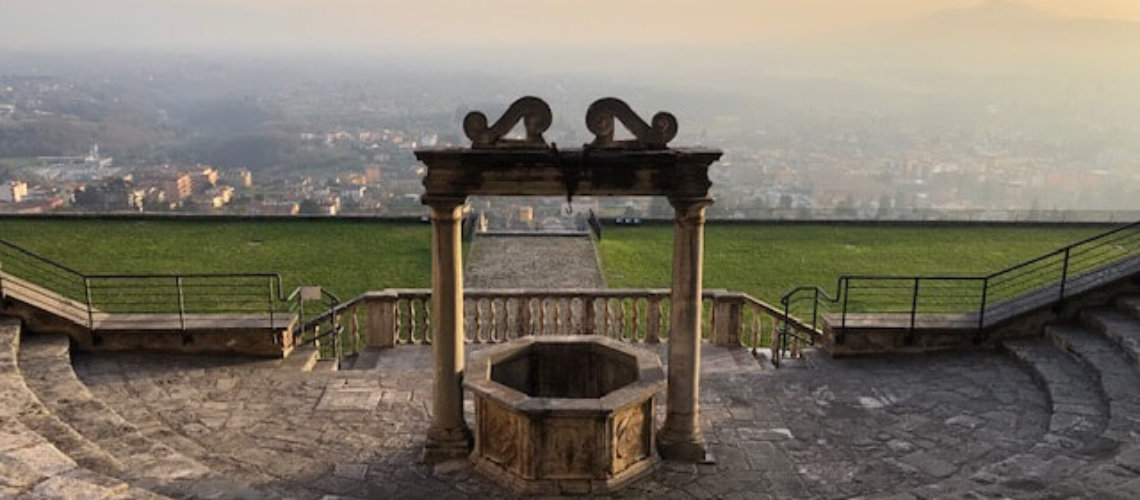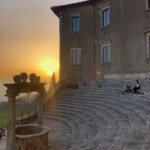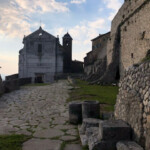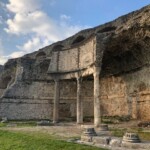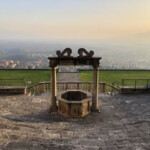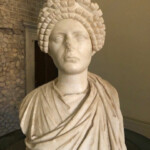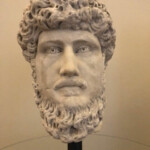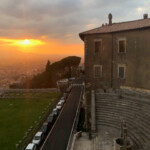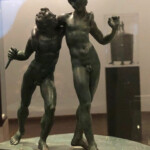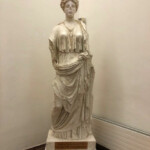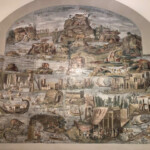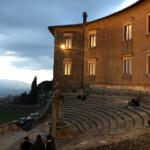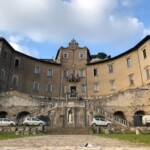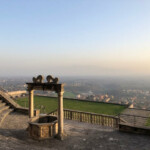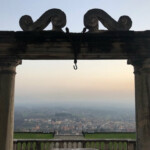Urged by Ozpetek’s latest film “Goddess Fortuna” I went to visit the ancient temple where the most evocative scenes of the movie were shot. I came upon this “place of mystery” by climbing to the very summit of the town at the sunset hour. My heart was full of curiosity and I longed to find myself in the presence of this scenery.
I made my way along the steep staircase of the site with a certain timidity and finally found myself within the evocative and theatrical cavea, ready to allow that sense of sacredness to sweep over me.
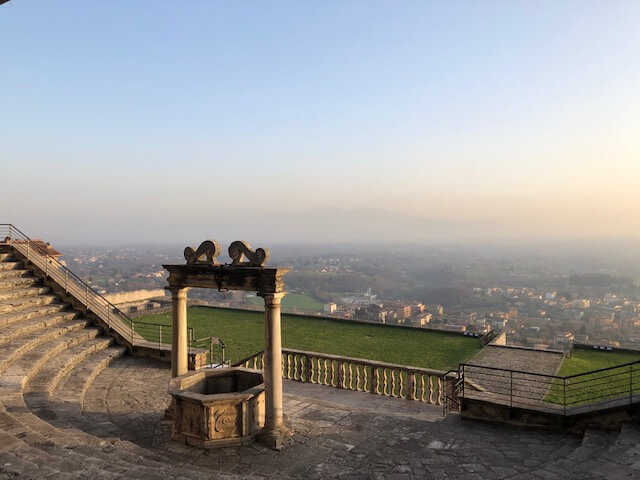
The Sanctuary of Fortuna Primigenia is a grandiose example of Hellenistic-Italic architecture inspired by Aegean prototypes and dating back to the Second Century BC. This place of wonder is located in Palestrina, the old Latin city of Praeneste in the Roman countryside, less than an hour southeast of Rome.
Why did the ancient Romans decide to build a temple dedicated to the Goddess of Fortuna Primigenia?
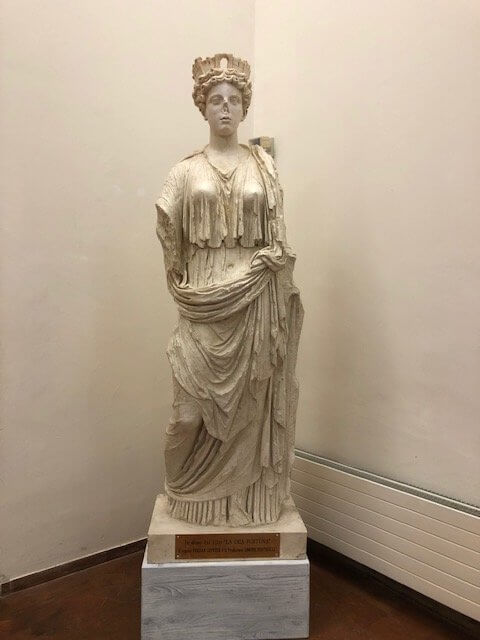
Prior to the advent of Christianity and its official recognition by the Roman Empire in the 4th century AD the old traditional cults were based on the veneration of ancient divinities intended to celebrate civil and political values.
For a long time Christianity would be viewed as a mostly “urban religion” until it slowly spread to the rural, pagan populations where it would be initially fused with the remains of traditional cults and rites.
In the Classical Greco-Roman world temples were places of respect and veneration. Places which treasured something sacred, something of great meaning which beckoned homages and deference. A pagan ritual was practiced in this temple. The pagans (literally from the Latin word pagus meaning “rural village”) were those people who lived in the countryside. Those who refused Christianity’s message “of salvation” and remained faithful to the ancient religion.
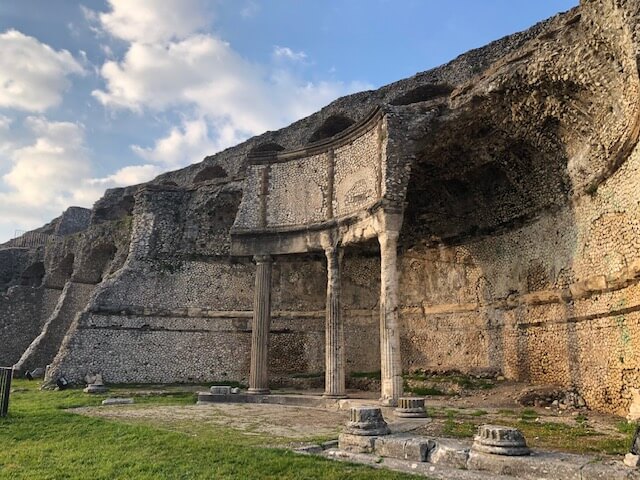
In pagan rituals the relationship was between the individual and God, while the soul was elevated towards a divinity invoked in times of need or in thanks for graces conceded. The rituals carried out in these temples expressed the feelings of the individual toward the divinity.
During the last phase of Roman civilization, Christianity interpreted this emotional connection as a relationship between God and the Christian community.
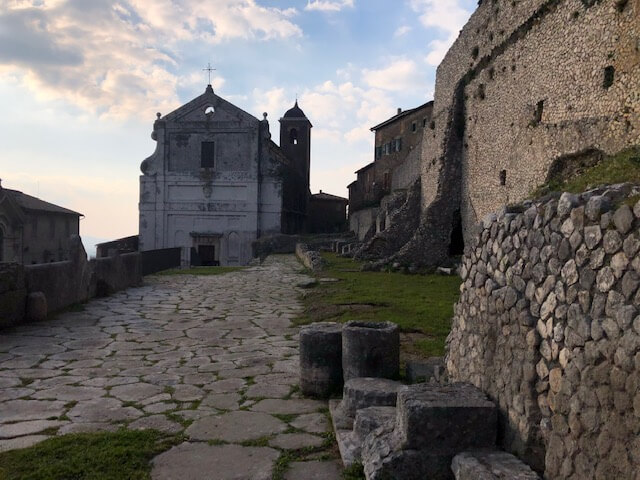
“Those higher powers to which we are attracted” captivated and soothed me for a few hours, rewarding me with moments of placidity and well-being as I contemplated the spectre of a Greco-Roman theatre. When the hour of my leave arrived, rationality diligently conducted me out of that sense of sacredness.
